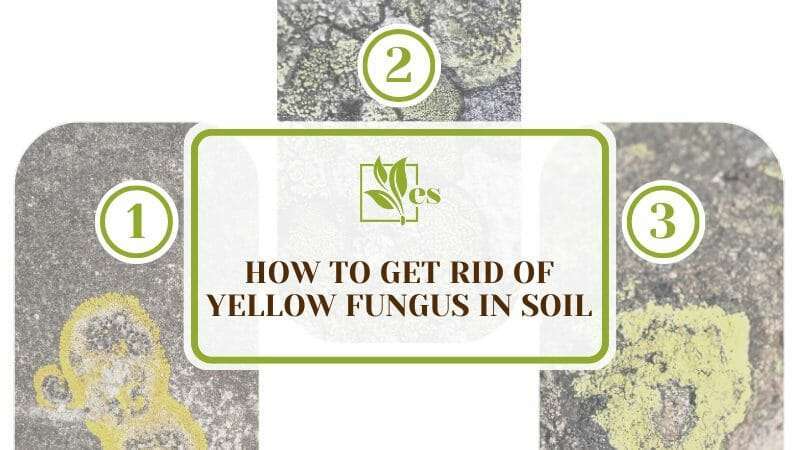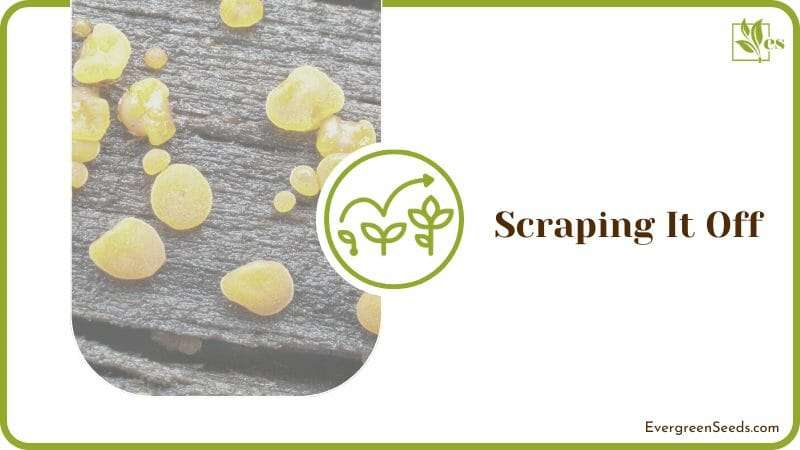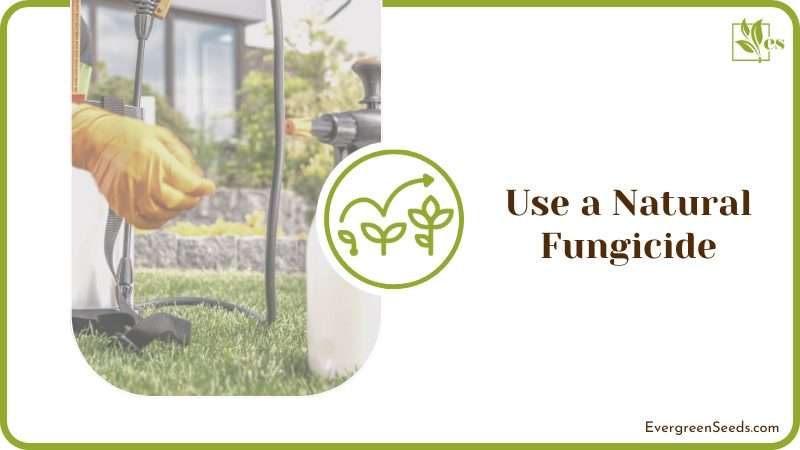Knowing how to get rid of yellow fungus in soil can be a plus for any plant enthusiast. If you are unaware of this issue, let alone addressing it, you may find yourself in an alarming situation.
 But worry not because our plant enthusiasts have shed light on what causes yellow fungus and how to deal with this crisis. The following guide will answer all your questions and offer a complete guide to troubleshooting the problem.
But worry not because our plant enthusiasts have shed light on what causes yellow fungus and how to deal with this crisis. The following guide will answer all your questions and offer a complete guide to troubleshooting the problem.
JUMP TO TOPIC
Why Is Yellow Fungus in The Garden Soil?
There is a yellow fungus in your soil due to contaminations, or you have overwatered your plant soil. These are the possible explanations as fungus thrives in the debris and soggy environment. Moreover, there are chances these yellow spots on your garden soil are Fuligo septica, aka dog vomit slime.
Dog vomit slime, also known as scrambled egg slime, seems like a bright yellow but disgusting-looking patch. It has a very moist and compact texture. It may appeal to you to touch it, which you may do so out of curiosity but remember to have your gloves on. Moreover, be gentle with your touch as spores can spread.
Although it may seem like an alien invasion that is here to finish humankind, Fuligo septica is harmless to humans, animals, and the plant itself. It feeds on decaying organic materials, making it a harmless saprophytic organism. However, it can make you very sick if you ingest it. So it is best to remove them and safeguard your pets and children.
But here’s a thing, these mold spores are not easy to avoid. They have prolonged durability with easy-to-spread characteristics. Moreover, they can grow up to eight inches in diameter and one inch in thickness if allowed to mature.
– Contaminated Soil
Yellow fungus on your houseplant soil can also be a yellow mushroom, known as plant pot dapperlings or flowerpot parasols. You can recognize it at a glance since it looks exactly like a little mushroom popping up in your garden.
This yellow mushroom comes from contaminated soil or even contaminated mulch that is around the surroundings of your plant. The mushroom will start to spread and contaminate the rest of the soil or the mulch.
The yellow mushrooms are a saprophytic organism, found in tropical and subtropical areas. From its looks, it may seem like the main ingredient for a poisonous magical potion, but it sits on the same harmless tag as dog vomit slime.
They do not attack the houseplants but feed on decaying matter, dead insects, and dead plant roots, which helps the plants sustain. Moreover, after feeding, they excrete these materials back into the plant soil, which helps in providing usable nutrients to the plant.
Now, a question may arise in your mind why is there even a need to remove these fungi if they are not harmful? For starters, they are detrimental if ingested, but other than that, it is more damaging to your eye than it is to the soil. You do not want to watch these unsightly yellow spores spread on your plant soil and disrupt its beauty, right?
How to Get Rid of Yellow Fungus in Soil
As discussed above, yellow houseplant mushrooms and dog vomit slimes result from overwatering and contaminated houseplant soil. So while taking control of these things, it is best to remove these fungi. But before we get started, here are some precautions you need to take.
Wear gloves and a mask, if feasible. The yellow mold or slime mold will not harm your skin if you touch it with your bare hands. However, since some people have fungus sensitivities, it may cause discomfort and respiratory issues. Therefore, it is best to take precautions beforehand.
Got your gloves and mask on? Let’s dive into the methods and remove these awful-looking yellow mold.
– Scraping It Off
With your gloves on, remove the houseplant mushrooms as they pop up. By doing this, you will prevent the yellow mushroom from spreading. And in the case of dog vomit slime, gently scrape off the upper two inches of the infested soil as mature Fuligo septica grow up to one inch.

Try to remove it without bursting the spores as it can contaminate the soil and regrow again, which we want to avoid. So after gently scraping it off, bin it in a plastic bag.
It is the most common method and on every gardener’s bucket list, but as long as it is functional, being cliché does not matter. Furthermore, manually removing yellow fungus is time-consuming and is a lot of work done for little reward. But do we have a better option or a better method? Yes, we do!
– Repot the Plant
With the above method, you won’t be able to treat the root cause of yellow slime, and there are chances it might reappear on your potting mix. Therefore, we suggest you shift your potted plant to another pot.
- Before doing that, make sure you have sterilized all your equipment as unsterilized tools can bring new diseases or even spread the current one. Once you are ready with your equipment, it is time to relocate your potted plants.
- But before unveiling the plant, wipe any yellow mold off the stems and leaves with a damp cloth.
- Next, gently remove the plant from its pot and gently shake the soil off the roots. If soil is too clamped on the roots, you can use a garden hose to remove it, but under a weak stream of water to avoid any damage to the roots.
- Moreover, if you see any infected root, prune it off to prevent the spreading of infection.
- After finishing the roots, transplant the plant into a new pot with contamination-free soil.
- Take the old contaminated soil away from your houseplants as far as possible.
- Lastly, water your plant and ensure the environment is favorable to the species and it thrives in the given conditions.
An error-free method, right? However, it is also a time-consuming process. So for someone with a busy calendar, this method might not be the best fit. Let’s jump to the next option.
– Use a Natural fungicide
The next option is to use an antifungal spray to clean the soil from yellow fungus. We will not suggest you spoil the environment and your plants with harsh chemicals that you get your hands on at the market. Instead, make a natural antifungal spray at home with just three basic ingredients: dish soap, baking soda, and neem oil.

Some say you should mix all these three ingredients to make an antifungal spray, but using just one of them will work fine too. Therefore, to make a solution, you can use any of the ingredients with water. But in what quantity, is a question mark for you. Not anymore!
If you have baking soda available, we suggest one teaspoon of soda mixed with one liter of water. Nonetheless, if you opt for dish soap, a single bottle squeeze of soap would be enough with the same amount of water.
As for the neem oil, it won’t mix with water as we all know the science, therefore, you can spray it directly onto the soil. This will make it difficult for the yellow spores to survive.
However, there is a precaution you have to take before using the antifungal apart from checking if the neem oil is expired.
When using dish soap, make sure it does not contain any bleach, degreaser, or other harsh preservatives as it can intoxicate the soil. Moreover, when your solution is ready, test it on a small isolated portion of your soil to see if it will have any adverse effects.
Also, for the plants’ safety, avoid spraying the antifungal on a sunny day as it can cause burning. With keeping these points in mind, you can remove the fungus effectively with an antifungal solution.
– Clear Any Waste Remains
The last method on the list to get rid of slime mold is to clear any waste material from the soil. Since the dog vomit slime and yellow mushrooms both eat and thrive on decaying organic matter, it is best not to provide such an environment.
Start with cleaning your houseplants, and remove all the dead leaves and stems from the soil. So there is no food left for these molds, and they eventually die out.
– Sterilizing the Soil
You can use the steam, pour approximately an inch of water into a sterilizing container, and place the pans filled with the potting soil on the rack over the water. Make sure to cover the pans with aluminum foil and keep the temperature at 180 degrees Fahrenheit for about 30 minutes, and your soil will be ready.
Moreover, you can also bake the soil to sterilize it. Put your soil about four inches deep in a baking pan and cover it with foil. Next, bake it at 180 to 200 degrees Fahrenheit for the same amount of time, 30 minutes. After baking, let the soil cool down before using it.
Final note:
The yellow mold on the soil is not as dangerous as you might picture it. Instead, it will help clean your garden soil by eating dead organisms that may cause lethal diseases to the plant if not removed. Furthermore, when it feeds on dead organisms, it excretes them back into the soil, providing beneficial nutrients for the soil. Thus, the plant stays healthy.
The yellow fungus is a disease known as turf grass rust. It produces powdery mildew spores, which spreads effortlessly throughout the grass. To clean your grass from this fungal disease, you can use fungicides. Moreover, avoid watering your grass at night as the grass blades will remain soggy for a prolonged period which will help the fungi to thrive.












